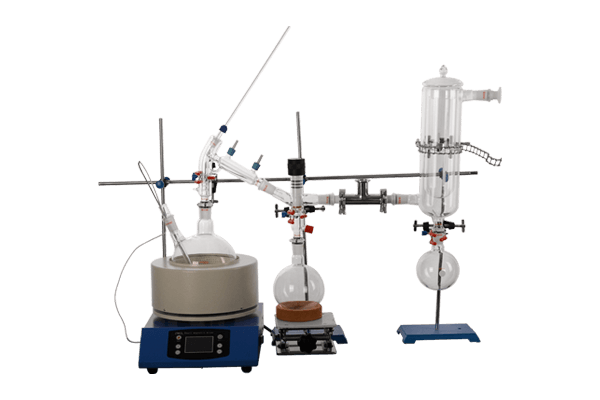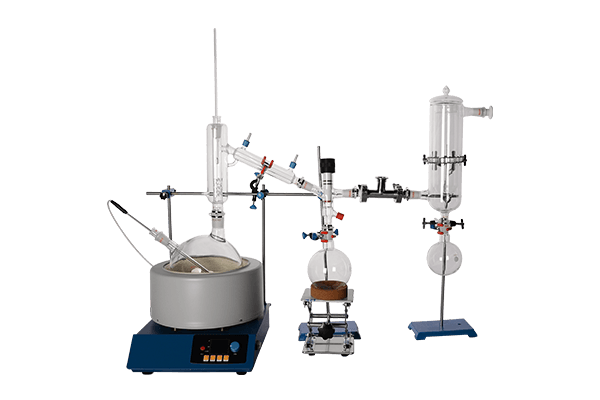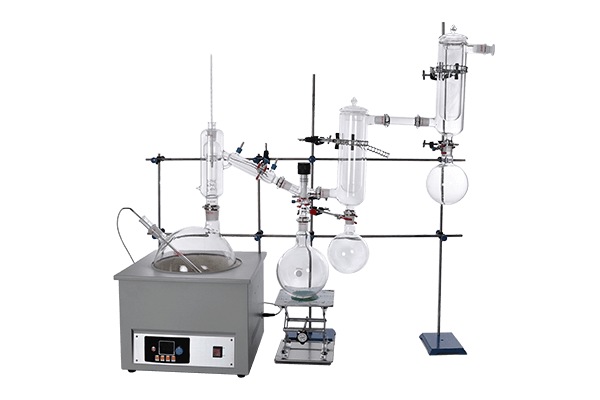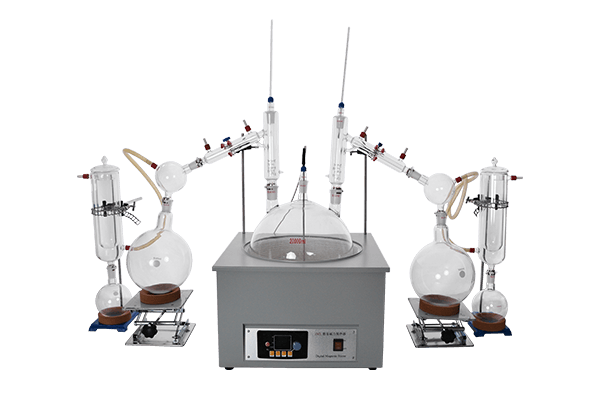What is a short path distillation?
Short-path distillation is a technique used to separate liquid mixtures by heating them to their boiling points and then passing them through a series of devices, such as distillation columns, to separate different volatile components. It operates at lower temperatures compared to traditional distillation, reducing thermal decomposition and chemical changes between components. This method is commonly employed to extract petroleum products from natural resources like crude oil or to separate products from chemical reactions. Short-path distillation is regarded as an efficient and rapid separation method, yielding pure products in shorter timeframes.

2L Short Path Distillation
Material: G3.3
Effective Reaction Volume: 2L
Vaccuum Degree(Mpa): 0.098
Working temperature(℃): 5-40
Temperature Control Accuracy: ±1℃
5L Short Path Distillation
Material: G3.3
Effective Reaction Volume: 5L
Vaccuum Degree(Mpa): 0.098
Working temperature(℃): 5-40
Temperature Control Accuracy: ±1℃


10L Short Path Distillation
Material: G3.3
Effective Reaction Volume: 10L
Vaccuum Degree(Mpa): 0.098
Working temperature(℃): 5-40
Temperature Control Accuracy: ±1℃
20L Short Path Distillation
Material: G3.3
Effective Reaction Volume: 20L
Vaccuum Degree(Mpa): 0.098
Working temperature(℃): 5-40
Temperature Control Accuracy: ±1℃

Get a quote now!
What can you do with short path distillation?
1.Extracting petroleum products from crude oil, such as gasoline, diesel, and kerosene.
2.Separating and purifying chemical reaction products to obtain desired chemical substances.
3.Extracting active ingredients from natural plant extracts, such as essential oils from medicinal plants.
4.In the food and beverage industry, it’s used to extract and separate food flavors and natural pigments.
5.In the pharmaceutical industry, it’s employed to purify drugs and biologics.
6.Separating and recovering solvents and reactants from chemical processes.
7.In environmental protection, it’s utilized for treating wastewater and waste liquids, separating and recovering useful components.
